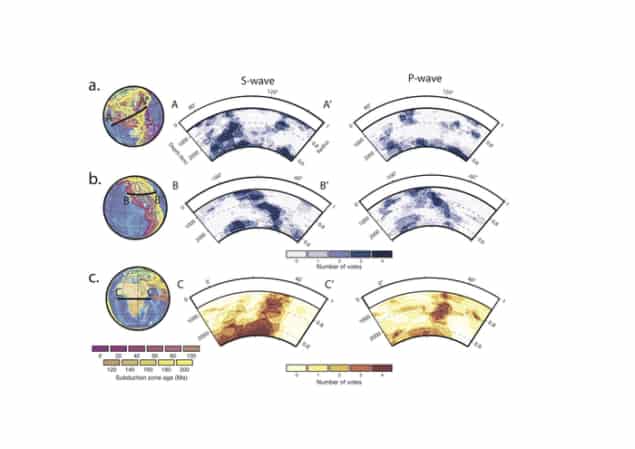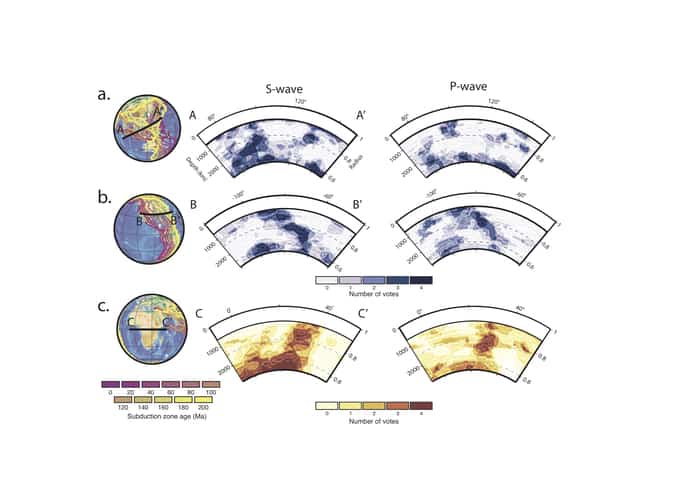
Researchers have identified a quantum phase transition taking place in iron more than 1000 kilometres deep within the Earth’s mantle. This transition, known as a spin crossover, also occurs in nanomaterials used for recording information magnetically, meaning that the effect stretches from the macro- to the nanoscale.
Many of the physical processes that occur deep inside the Earth remain a mystery, especially those at depths of more than 660 km. This is because we only have access to seismic tomographic images of this region, explains Renata Wentzcovitch, a physicist at Columbia University in the US who studies materials under extreme conditions. To interpret these images, researchers need to calculate the seismic (acoustic) velocities in minerals at the pressure and temperatures that prevail in the Earth’s mantle. Such calculations can then be used to create three-dimensional velocity maps and calculate the mineralogy and temperature of the regions being observed. In these maps, a phase transition such as a change in a mineral’s crystal structure usually produces a sharp velocity discontinuity.
Scientists have known for nearly two decades that a spin change occurs in an iron-rich mineral called ferropericlase (Fp), which is the second most abundant component of the Earth’s lower mantle. This change, or crossover, can occur when iron-bearing minerals are under pressure or exposed to high temperatures. During this process, the bulk modulus of Fp – a measure of its resistance to compression – drops as electrons in iron’s d-orbitals change from a high-spin to a low-spin state. The same spin transition is also exploited in magnetic recording applications, since the magnetic properties of materials just a few nanometres thick vary significantly when they are stretched or compressed.
Fp spin crossover signals deep within the Earth
Wentzcovitch and colleagues predicted in 2006 that the same effect effect should also occur in the Earth’s lower mantle, across a zone a thousand kilometres wide. Since then, her group and others have developed ways of modelling the spin crossover in Fp and another mineral, bridgmanite, which is the most abundant mineral in the Earth’s lower mantle. Using ab initio calculations based on density functional theory, they predicted the properties of these minerals during this quantum phase transition.
In the latest study, which is published in Nature Communications, the team identified Fp spin crossover signals deep within the Earth’s lower mantle (in the ~1400-2000 km depth range) by studying specific areas in regions where this mineral is expected to be abundant. They also identified similar signals below a depth of 1800 km.

Seismic monitoring reveals tidal stresses in the Earth’s crust
Geophysicists have already used such results to simulate the effects of spin crossover on mantle convection. They have shown that spin crossover in iron can invigorate convention in the Earth’s mantle and speed up tectonic plate motion – meaning that this quantum phenomenon might possibly be linked to increases in the frequency of seismic events like earthquakes and volcanic eruptions.
The researchers are now developing more accurate simulation techniques to predict seismic velocities, particularly in regions rich in iron, at temperatures close to its melting point. The techniques developed in this and previous work can also be applied to materials such a multiferroics and ferroelectrics, in which electrons are strongly correlated, and to materials at high temperatures and pressures in general, they say.
